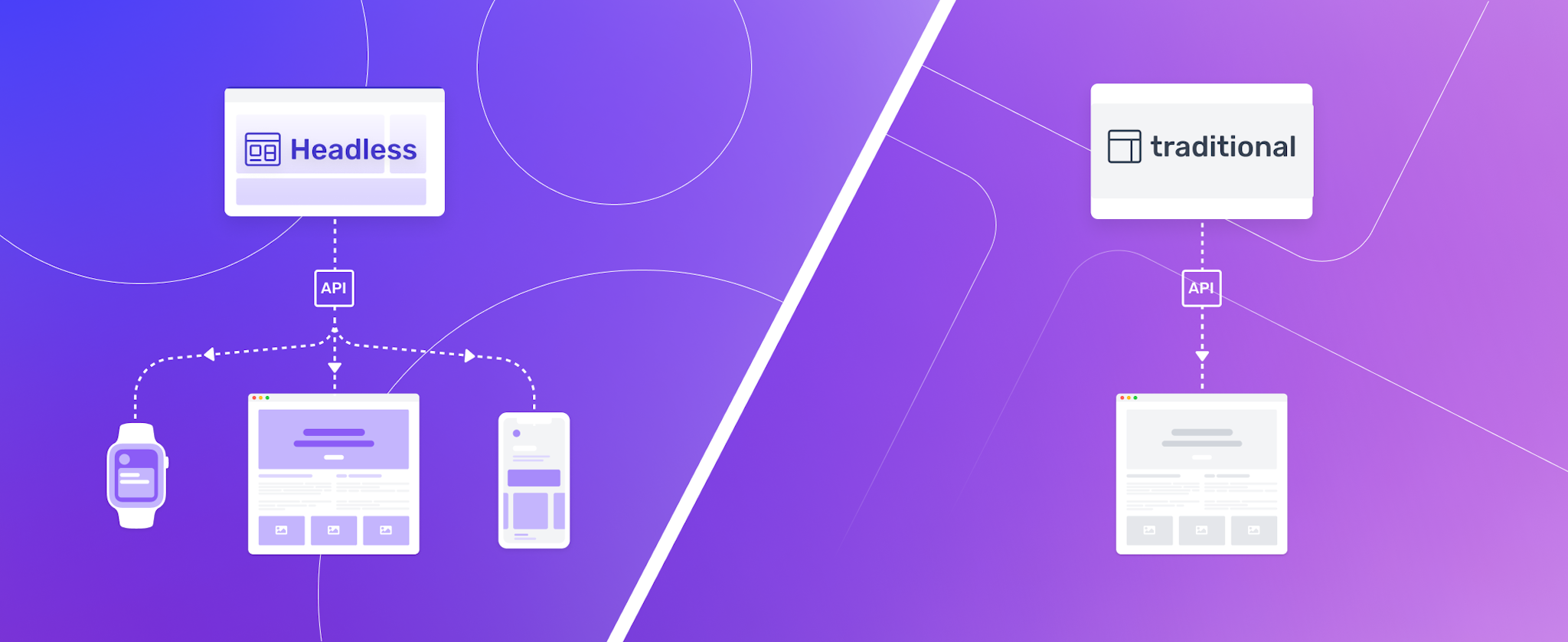The tools and methodologies we use to engage customers have undergone many stages of evolution and will need to evolve even further to achieve the level of personalization required. Not all CMS solutions have kept up with the modernization of their tools, and many marketers are starting to look for those that did.
Headless CMS is a common term in the CMS industry that you will surely have heard of or seen as a modern CMS offering.
In this blog, you will read about how a headless CMS compares to a traditional CMS so you can explore which will work best for you.
All about the headless CMS
The term “headless” comes from the fact that in this CMS, the body is disconnected from the head. This means that you can create, manage and store data in the backend without being limited to a specific frontend format, design, or distribution channel.
With a headless CMS it is easier to change the frontend making it more flexible and ideal for future changes. It is a future proof CMS.
There are features that modern headless CMS solutions use to enable digital content management. These include:
- APIs - Headless CMS use APIs to deliver content to omnichannel digital experiences and to create communication channels between applications.You can create, manage and store content in reusable modules.
- Integration Ability - lets developers easily plug into third-party applications, such as your CRM, to enrich content. This level of integration enables you to quickly create personalized and cohesive content-driven experiences on a large scale.
- Content Management Tools - contain rich text-editing capabilities, flexible content models and modules, creation and approval workflows, rules and permission settings, content previews, and publishing automation.
- Analytics and Reports - provide you with all the information and insight you need to guide your digital content strategy.
- Developer Resources - development resources such as DevOps services, webhooks, web frameworks, easy-to-use APIs, detailed documentation, and customer support.
All about the traditional CMS
Traditional content management systems also empower users to create, manage and publish content to one frontend, such as a single website or a single mobile app. The backend and frontend are tightly coupled in this monolithic structure.
Your content is not stored in modules and you cannot make changes once content is published. Adding new functionality or features to a traditional CMS can be done using plugins.
Traditional monolithic CMSs share some common features, such as:
- Monolithic Platform - single monolithic platform that feeds content to a website.
- Templates and Plugins - delivers content to websites alone and does not enable much flexibility for serving content.
- Content Management Tools - features many content management tools, such as robust text formatting, digital asset management, version tracking, and WYSIWYG editors, enabling a preview of your content on the live website.
- Simplicity for Business Users - easy to create a simple, website-based experience without dedicated development resources.
When to select a headless CMS
- You need to manage several CMS platforms.
- You need to publish content to multiple channels simultaneously to save time and deliver ultra personalization.
- Currently, the development process is delaying your Marketing and you need to empower the marketing team to create, store, edit and manage content.
- You need your business website to be central to your digital experience.
- You need enterprise-level security for content and data.
When to select a traditional CMS
- Your main focus is website usability.
- You have limited access to development support.
- You do not require omnichannel digital experiences.
The type of CMS best suited for your needs depends on the type of content you need to manage and the digital experience needs of your company.
The traditional CMS infrastructure was revolutionary when websites were static and encompassed all we knew about digital experiences.
Technological advances and the internet have given birth to a multitude of IoT devices and digital channels, and consumers are looking for personalized, cohesive, and always-on experiences.
Static websites do not fit into modern customer expectations anymore. Headless CMSs were created to deliver these digital experiences.
Don’t you think it is time to choose a headless CMS over your traditional CMS? Why not book a demo to see what the true power of a headless CMS can do for you?
